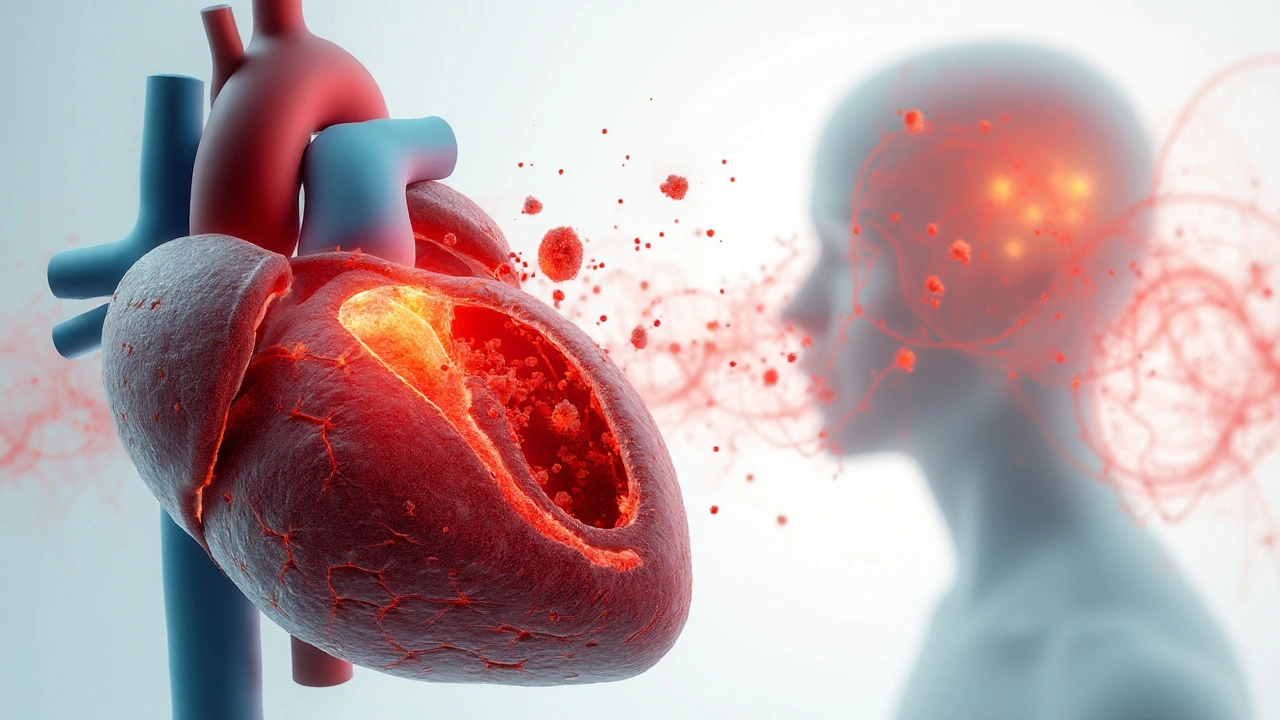CHA2DS2-VASc Score: Quick Guide for Atrial Fibrillation Patients
If you or someone you know has atrial fibrillation (AFib), you’ve probably heard doctors mention the CHA2DS2-VASc score. It’s a simple tool that helps decide whether anticoagulant medicine is needed to lower stroke risk. The name looks long, but the idea is easy: add up points for a few health factors, and the total tells you how high your stroke risk is.
What the Score Measures
Each letter in CHA2DS2-VASc stands for a condition that raises stroke risk. Here's the list:
- C – Congestive heart failure (1 point)
- H – Hypertension, or high blood pressure (1 point)
- A – Age 65‑74 years (1 point) or Age 75+ years (2 points)
- D – Diabetes (1 point)
- S – Prior Stroke, TIA or clot (2 points)
- V – Vascular disease (like prior heart attack or peripheral artery disease) (1 point)
- A – Sex category, female (1 point)
You simply add up the points that apply to you. The higher the total, the higher your chance of having a stroke while living with AFib.
Using the Score in Practice
Doctors use the total to decide if you should start an anticoagulant, such as warfarin or a newer direct oral anticoagulant (DOAC). Generally:
- Score 0 (men) or 1 (women) – No anticoagulant needed, just monitor.
- Score 1 (men) or 2 (women) – Discuss options; many doctors recommend a weak anticoagulant or a short trial.
- Score 2 or higher (men) or 3 or higher (women) – Strongly consider a full‑dose anticoagulant.
These rules are a shortcut, not a rule set in stone. Your doctor will look at bleeding risk, other medicines, and personal preferences before making a final call.
It’s helpful to know your score before a visit. You can calculate it using a pen and paper, a printable chart, or a trustworthy online calculator. Having the number ready lets you ask focused questions like, “Based on my score of 3, should I start a DOAC?” This shows you’re involved in your care.
Remember, the CHA2DS2-VASc score isn’t a guarantee you’ll have a stroke, nor does it predict bleeding. It’s just a guide to balance the benefits of blood‑thinners against their risks. Keep your blood pressure, blood sugar, and weight under control – those steps lower the score over time.
In short, the CHA2DS2-VASc score is a quick way to see how much stroke risk AFib gives you and whether a blood‑thinner is worth it. Knowing the score, talking openly with your doctor, and staying on top of your health can keep you safer and more confident about your treatment plan.
Atrial Fibrillation and Embolism: What Causes Clots, Stroke Risk, and How to Prevent It
Why AFib leads to clots, how embolism causes stroke, who needs blood thinners, and how to cut risk-simple steps, evidence-backed tips, and clear checklists.
